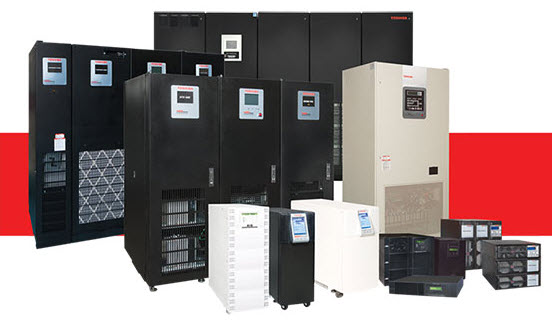Power conditioning is one of the lesser-known but equally important functions of an uninterruptible power supply (UPS). Its primary purpose, of course, is to provide a source of electrical energy to maintain continuity of business throughout an interruption in mains electricity or until an alternative source of energy (such as a generator) starts up.
Why the Need for Power Conditioning?
There are issues associated with raw mains electricity that can cause problems for electronic equipment. These include, but are not limited to: sags, surges, brownouts, spikes and transients, electrical noise, harmonics, frequency variations and, of course, complete blackouts. At best, power problems can cause equipment (particularly computer and telecommunications equipment) to lock or crash. At worst, they can result in a complete breakdown - thus entailing costly and disruptive repair and/or replacement. In the case of computers, they can also result in data being lost or corrupted, which for many industries that are heavily regulated (such as banking and finance) can be disruptive to business, damaging to reputation and credibility, and in extreme cases, can lead to heavy fines or financial penalties.
Power Conditioning, therefore, by Singapore uninterruptible power supply and associated equipment, is a process by which it monitors incoming mains electricity, cleanses it and significantly reduces the effect of problems such as those highlighted already. Some UPS, fitted with special filters, can reduce the effect of harmonics. All UPS maintain frequencies to within prescribed limits thus correcting frequency fluctuations. Ultimately, this means protected loads upstream, receive a clean and regulated supply of electrical energy.
Power Conditioners
Power conditioners attenuate spikes, transients and electrical noise voltages to low levels. They can be solid state electronic or transformer-based. Where these types of problems predominate, and sensitive equipment is being protected, that's where power conditioners will be used, typically in industrial environments. Some power conditioners can also provide voltage stabilization over a wide input voltage window (typically minus 20 to plus 15%) and output voltage regulation (typically plus or minus 5%). Models of this type can be referred to as Constant Voltage Transformers (CVT) or Ferroresonant type design.
This type of transformer is more reliable than a solid-state electronic design and provides galvanic isolation (a means of preventing unwanted electrical currents from traveling between two separate units). It's history rest in uninterruptible power supply designs from the 1980s (known as Ferro UPS), which paired the CVT with a Line Interactive UPS to achieve a 'no-break' output. Though reliable and robust, this type of uninterruptible power supply was only practical for single-phase installations and couldn't compete on cost, noise, physical size and weight, with transformerless UPS designs that were beginning to emerge.
Automatic Voltage Stabilisers (AVS)
AVS provide protection from sags, brownouts and surges. They can be electro-mechanical or solid-state electronic devices and are often referred to as Automatic Voltage Regulators (AVRs). AVS typically have wide input voltage windows (minus 40 to plus 20%) to enable them to do their job. When presented with a low or high mains power supply voltage, a control circuit selects a transformer tap setting to buck (step down) or boost (step up) the voltage to more acceptable levels. The output voltage tracks the input voltage window as there is, typically, no voltage regulation.
Some Automatic Voltage Stablisers incorporate a filter to provide both the load and AVS with protection from spikes, transients and electrical noise. The primary application of an AVS is in remote areas where sags, surges and brownouts are common to protect equipment such as fridges, freezers and domestic electrical goods.
Filters and Filter Strips
Filters provide protection from spikes, transients and electrical noise. Instead of attenuating problems like power conditioners, filters clamp peak voltages to pre-defined levels and prevent damaging electrical noise from passing through to connected loads.
There are a number of filters available and performance varies considerably across the range. Filter (surge) strips, for example, are commonly used within ICT environments for power distribution. At the higher end, more specialist filters can be acquired for specialist environments, such as scientific laboratories. Filter performance, clamping level and speed of response, is dependent upon their circuit design and the size of the disturbance it is faced with.
Transient Voltage Surge Suppressors (TVSS)
TVSS provide protection from transient voltages and high-energy spikes, particularly those induced into a building's electrical supply by local lightning strikes. They are rated in terms of the Amps (A) or Joules (J) they dissipate. They usually sit parallel to the load and only react when presented with a transient or high-energy surge.
When installed within a building, a 'zoned approach' is recommended, which places high rated devices before distribution boards. A TVSS may be fitted upstream of a UPS or inside a bypass panel, generator AMF panel or distribution boards to provide protection from nearby lightning strikes.
TVSS designs tend to be based around Metal Oxide Varistors (MOVs) rather than Gas Discharge Tubes (GDTs) typically found in surge suppressors. Some manufacturers combine their MOV designs with a Silicon Avalanche Diode (SAD) front-end to speed up their response time.
